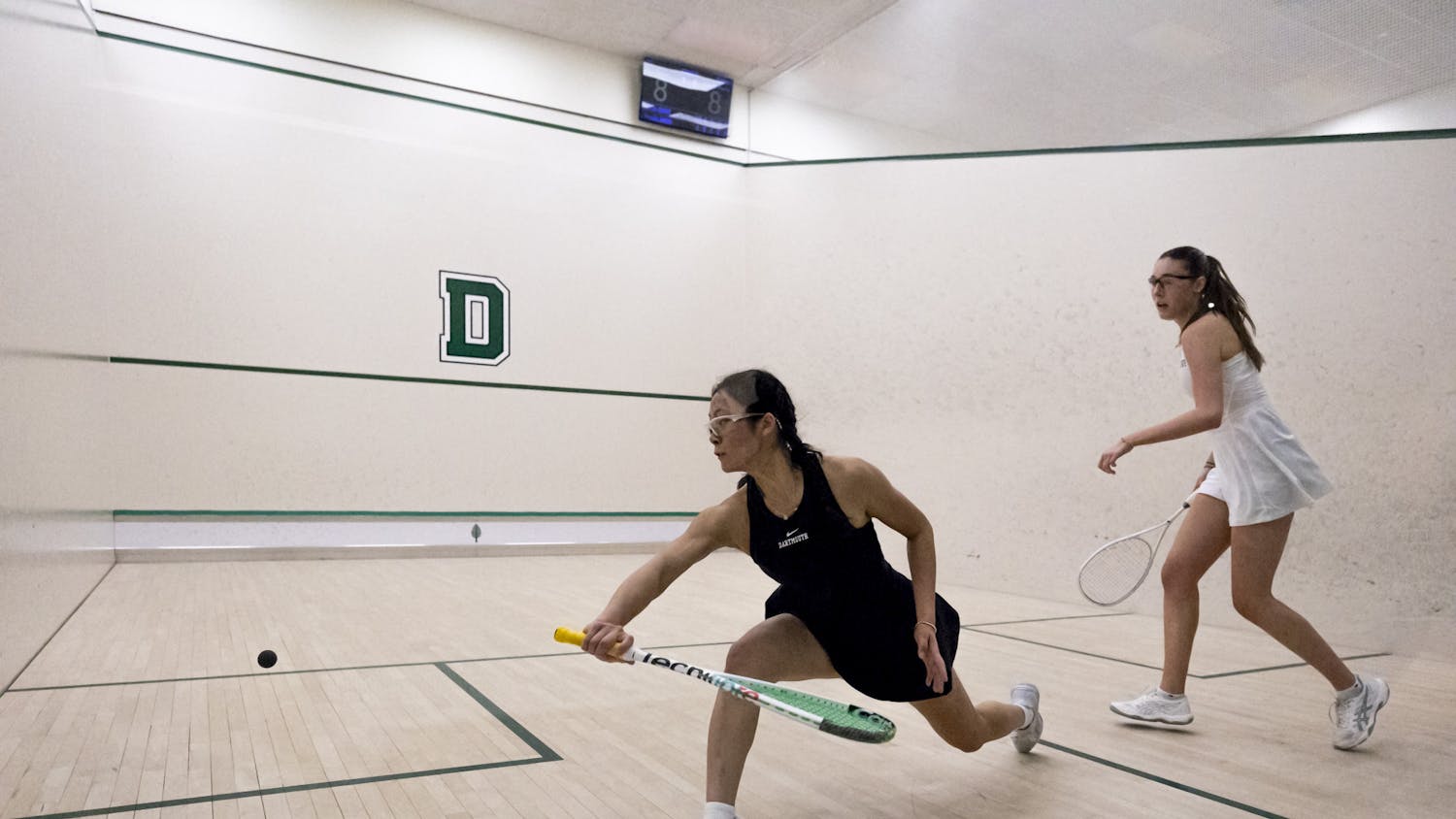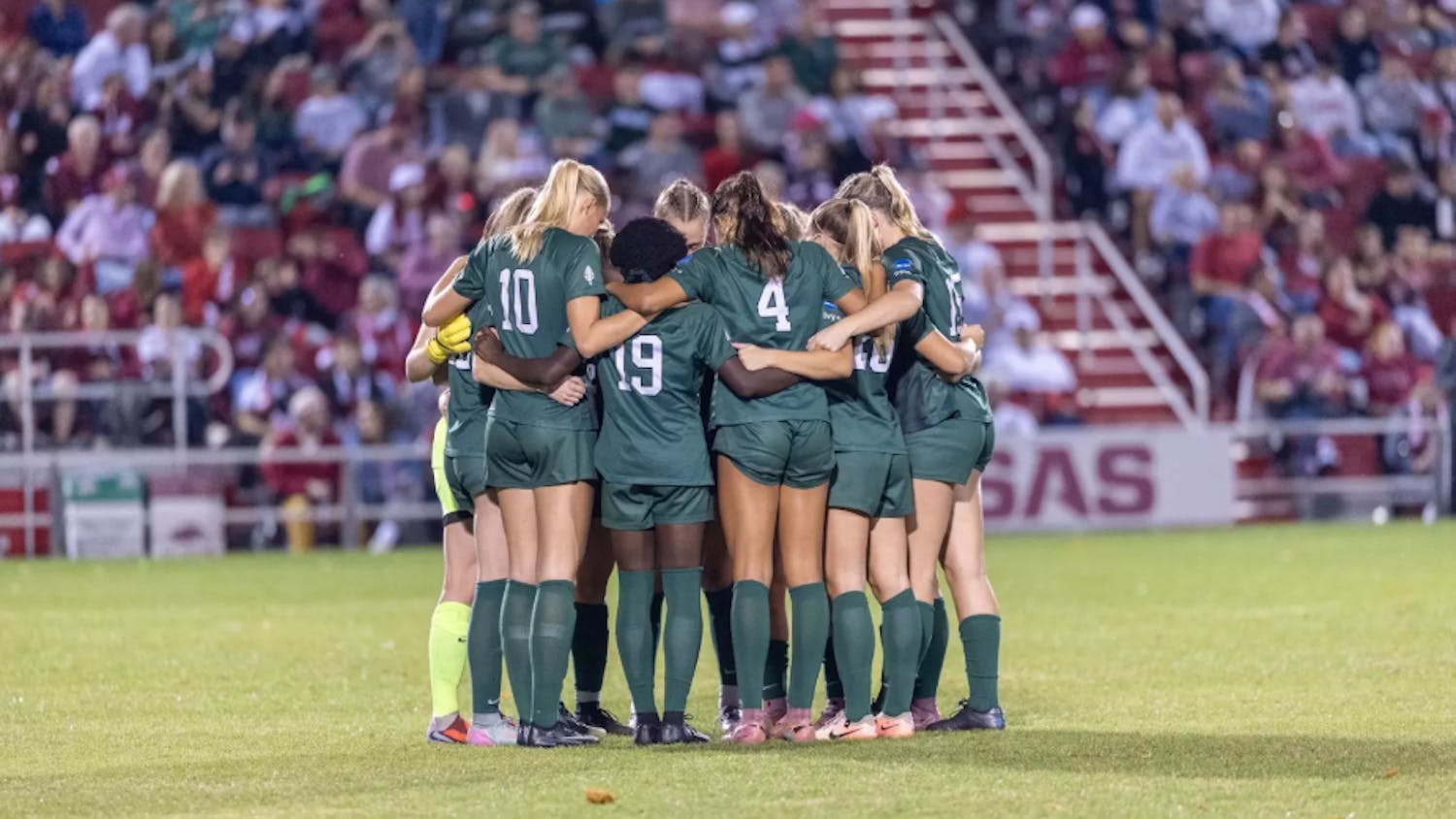On March 18, top 20-ranked women's lacrosse faced No. 2 University of Maryland at home. Maryland was undefeated, and the Big Green came into the game with an even record. It was set up to be a good game, and Dartmouth delivered excitement, dragging the game into overtime, although ultimately ending with a 13-12 loss.
The game, however, was only attended by 58 fans.
While students at Pennsylvania State University camp out overnight to ensure their spots at football games, some Dartmouth students wonder why the stands here so often seem empty and quiet.
Many students cited poor athletic performance as a reason for the noticeable lack of fan culture at Big Green games.
"There is a fan culture for the teams that are doing really well," Eben Clattenburg '09 said. "But I think when a team is having a tough year, it's not fun to go and watch them get destroyed all the time."
Martin Kulander '12 agreed, adding that Dartmouth sports teams generally do not garner many wins, which hinders fan appeal.
"There is a direct correlation between the success of our sports teams and attendance," he said. "People are more likely to attend games for the more consistently successful ones, like men's soccer and the hockey teams."
Although teams with losing records may provide less entertainment for fans, all athletes seem to appreciate enthusiastic crowds.
Football player Chad Hollis '12 said that the energy and adrenaline of a big crowd can help a team perform at their best.
"Dartmouth fan culture is really strange because, at most of the games, the student section is pretty docile," he said. "At our games, more of the support comes from the town and alumni. We kind of lack that hostile environment that throws off other teams' games on the field."
Men's soccer had reliable crowd support throughout the fall, with a baseline of about 700 fans cheering them on to victory. Then, in the Nov. 14 sellout against Brown, over 2100 fans came out to watch the Big Green snag a share of the Ivy title in the last game of the regular season, according to official attendance numbers.
The team, however, also had a successful season in comparison to other Dartmouth sports, ultimately making it to the NCAA tournament and facing top-seeded Wake Forest University.
"I guess we are pretty fortunate that we have fantastic fan support, not only from students at Dartmouth but also from the greater Hanover township," co-captain Craig Henderson '09 said. "Playing in front of a packed stadium really makes a huge difference for us and hopefully that will continue in the future."
Alex Rahmann '12 noted that football games fail to bring in many Dartmouth students, which she said is most likely due to the team's repeated losses.
"The stands are usually empty," she said. "It's never good when the away stands are louder than the home stands, but to put it delicately, the quality of play is not capable of attracting a large number of fans."
Although "quality of play" is arguable, the football team's 0-10 record speaks clearly about the team's lack of competitiveness this season. While the Homecoming game on Oct. 18 drew over 7500 fans, the crowd seemed to be dominated by alumni, and only 2200 people came out to watch the team's last home game against Brown in November, according to official estimates.
While these numbers are much larger than those associated with some other sports, they aren't exactly sellouts -- the football team's Memorial Field seats approximately 13,000 fans.
Gregory Certo '12 explained that one reason students attend sporting events is to support their friends on the field.
"At a small school, we know all of the guys on the team," he said. "It's fun to watch them play."
For students like Certo, watching the Big Green is not simply a passive experience, but rather an occasion for rowdiness and spirit. Matt Broccolo '10, a member of Chi Gamma Epsilon fraternity, said there is a tradition among members of the fraternity of heckling at baseball games.
"We make up stuff and use the same degrading chants, mostly," he said. "We try to be as degrading as possible without insulting anyone directly."
In the same vein, Greg Knight '12 said that he considers Dartmouth fan spirit to be "directed anger."
"We've got a lot pent up, and we tend to let that out on the other teams," he said.
Some of the stored energy described by Knight may have been released on the Princeton men's hockey team, when Big Green fans flung tennis balls onto the ice after Dartmouth's first goal, a yearly tradition. Many students mentioned hockey as one of their favorite sports to watch at Dartmouth, along with soccer and baseball.
Rahmann said that hockey usually has a fair amount of spectators, because the Hanover community supports the team and loves the sport.
The support of community members isf often outshone, however, by the high energy of Dartmouth students at hockey games.
Pat Martin '12 and five of his friends once painted their chests for the men's game against Cornell, spelling out "DMOUTH."
"It's easier to get pumped up for hockey because it's an exciting sport," Martin said. "And I don't think we were the only people doing it, either."
Martin argued that although Dartmouth's fans are not as noticeable or numerous as the fans at some other schools -- such as Duke's legendary Cameron Crazies -- they are still active and supportive.
"I think there is a tremendous amount of school pride, but not necessarily in the conventional paradigm of men's football and basketball like at other schools," he said. "Our fan culture is unconventional, but if you're willing to go to a softball game, you might see some great athletics."
Tom Mandel '11 said that these "unconventional" sports are the areas in which the Big Green normally excels.
"For one thing, other than hockey, the sports that we happen to be good at are not typical spectator sports," he said. "You can't watch a cross-country ski race the way you can watch a football game."
Mandel is a staff columnist for The Dartmouth.
Like Martin, Shawnta Everett '12 said that Dartmouth teams do have a lot of support, despite the fact that this support is not always visible in the stands.
"There's a lot of people backing them, even though they don't come [to the games]," she said.
Some of the most well-attended games are advertised with themes to draw in and excite fans.
Men's basketball, which enjoyed larger crowds as the team improved over the season, had a great turnout against Brown on Feb. 6. The game was a "blackout," as energetic fans came out dressed in black to cheer on the Big Green.
Men's teams often seem to attract more fans than do the College's women's teams. When the lacrosse teams faced Brown early this season, the men were cheered on by over twice as many fans, despite going into the game 0-5. The women, meanwhile, had a significantly better record, entering the game with a record over .500.
And although the women's basketball team won the Ivy League this year, making it to the NCAA tournament, the team usually had significantly fewer fans than did the men's basketball team. Even the "Wear Pink" game against Columbia, designed to raise awareness of breast cancer, drew a smaller crowd than the men's game against Yale the previous weekend.
Fans did show up en masse, however, to support the women's basketball team in its final game against Harvard, with the Ivy League championship on the line.
The volatile Hanover climate also seems to factor into fan turnout now that Spring term is here and games are played outside. Knight said that baseball is his favorite sport to watch, but that the stands at the doubleheaders last weekend were "really empty."
Clattenburg said that the hectic schedules of Dartmouth students are yet another issue for Dartmouth's fan culture, independent of how students actually view their teams.
"The Dartmouth terms are just so short and so busy," he said. "When people finally get to the weekend, there's just so much to cram in that people pick to either work or go out first, instead of going to the games."
Everett, who makes it out to five or six games each term, also said that it comes down to an issue of time management.
"The students don't have enough time to go and watch sporting events," she said.
Additionally, Anastassia Radeva '12 said that, for students involved in club and intramural sports, there is also often a conflict between watching varsity games and participating in their own events.
Time may well be a factor, as it seems that that many more fans show up to weekend games. While only 123 fans came out to watch the baseball team crush Saint Anselm College on a Wednesday, over 500 attended the rainy doubleheader against Brown that weekend.
Mandel said that Dartmouth's "self-call" culture discourages the creation of celebrity athletes and massive fan support.
"Dartmouth's culture is one that does its best not to sensationalize the talents of any one student," he said. "Contrast this with a school like USC, where the football team walks around like campus demi-gods."
However numerous these issues may be, Henderson said it would be great to see more fans at games in general.
"It's obviously tough when teams aren't always winning," he said. "But it still seems like there's a bit too much apathy towards the majority of sports on campus."



